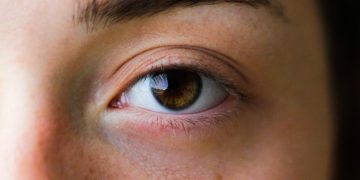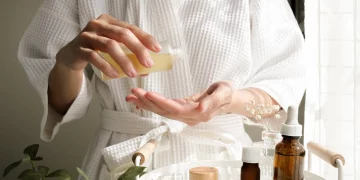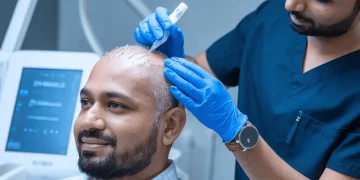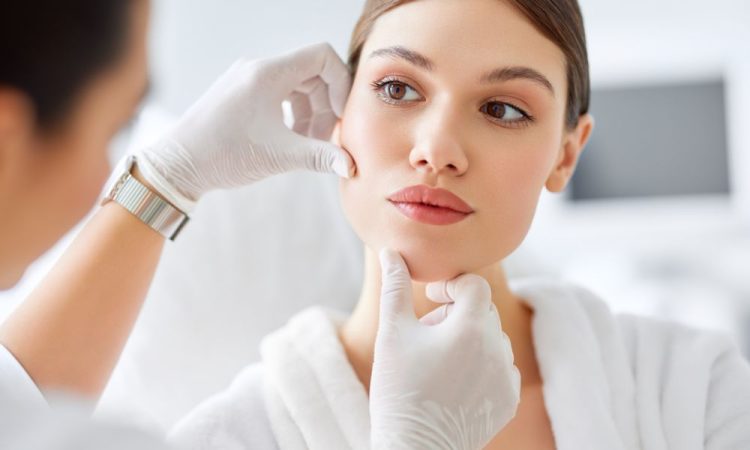Aging has long been seen as an inevitable process—one marked by wisdom, experience, and, of course, the visible signs of time on the skin. Yet in the 21st century, preventive aesthetic medicine is reshaping what it means to age “gracefully.” The question is no longer how to reverse aging but how to delay its visible and physiological effects before they fully manifest. With the rise of non-invasive technologies, personalized skincare, and early dermatological interventions, people are increasingly turning to science not for transformation, but for preservation.
This article explores the evolution of preventive aesthetics, the debate between early intervention and natural aging, dermatologist insights, ethical considerations, and the emerging patient psychology behind this paradigm shift.
Early Intervention vs. Natural Aging: A New Philosophy of Beauty
For decades, aesthetic medicine was reactive. Patients sought treatments to undo visible aging—wrinkles, sagging, hyperpigmentation—after they appeared. Today, the narrative has shifted toward prevention rather than correction.
Preventive aesthetic medicine emphasizes early intervention, typically beginning in one’s late 20s or early 30s, when the first signs of collagen decline and oxidative stress emerge. The idea is to support the skin’s biological resilience—stimulating collagen, maintaining elasticity, and minimizing cellular damage—before visible aging sets in.
Proponents argue that this approach aligns with other preventive health models. Just as one might take cholesterol-lowering medication to prevent heart disease, regular non-invasive aesthetic treatments (such as microneedling, light peels, and low-dose Botox) can delay visible signs of aging while maintaining natural expression.
Critics, however, raise philosophical and ethical questions: Does intervening too early reinforce age anxiety? Does it blur the line between self-care and vanity? Advocates of natural aging emphasize that wrinkles and fine lines tell human stories—and that constant preemption risks creating unrealistic beauty standards.
Ultimately, the choice lies in balance. Preventive aesthetics seeks not to deny aging, but to reshape its tempo, blending biology with intention.
Non-Invasive Treatments: Redefining “Low-Impact” Aesthetics
The technological revolution in aesthetics has given rise to a suite of non-invasive or minimally invasive treatments that allow patients to maintain youthful skin without surgical intervention.
1. Neuromodulators (Micro-Botox and Preventive Botox)
Small doses of botulinum toxin are used not to freeze facial expression but to train facial muscles and prevent repetitive motions that cause dynamic wrinkles. Dermatologists report that preventive Botox, when applied judiciously, reduces the intensity of muscle contraction patterns over time, minimizing future wrinkle depth.
2. Laser and Light-Based Therapies
Devices like IPL (Intense Pulsed Light) and fractional lasers stimulate collagen production and even out pigmentation without significant downtime. Regular maintenance sessions act as “resets” for the skin’s repair processes.
3. Microneedling and RF (Radiofrequency) Stimulation
By inducing controlled micro-injuries, these treatments activate fibroblast activity—encouraging natural collagen remodeling and tissue tightening. Preventive use in younger patients ensures long-term dermal density.
4. Biostimulatory Fillers and Skin Boosters
Formulations like hyaluronic acid and polynucleotides enhance hydration and trigger fibroblast activity, improving skin tone and elasticity rather than adding volume.
5. Personalized Topical Protocols
Advancements in AI-driven skincare diagnostics allow dermatologists to tailor regimens that adapt to genetic, environmental, and behavioral data—optimizing prevention through customization.
Together, these interventions redefine modern aesthetics: subtle, preventive, and integrated with holistic health.

Dermatologist Perspectives: Science, Strategy, and Balance
From the dermatologist’s perspective, preventive aesthetics represents an evolution from cosmetic enhancement to functional skin health. Leading practitioners emphasize that timing, moderation, and scientific understanding are key to effective prevention.
Dr. Maria Chen, a board-certified dermatologist in Singapore, explains:
“Preventive aesthetic medicine isn’t about chasing youth—it’s about extending the period of skin vitality. When patients start early, treatments can be lighter, less frequent, and more natural in result.”
Dermatologists also stress the importance of lifestyle integration. Preventive care isn’t limited to injections or devices—it includes UV protection, nutrition, sleep, and hormonal balance. The most successful anti-aging plans are multidimensional, supporting both internal and external wellness.
However, dermatologists caution against overuse or misapplication. Dr. Alexander Russo, a New York-based aesthetic physician, notes:
“There’s a misconception that starting early means doing more. In reality, preventive aesthetics should mean doing less, more intelligently.”
This physician-guided philosophy reframes aesthetic medicine as a long-term partnership between doctor and patient, centered on education and evidence.
Patient Ethics: Agency, Pressure, and Empowerment
Preventive aesthetic medicine introduces profound ethical questions about personal agency, societal pressure, and the commodification of youth.
- Informed Consent and Realistic Expectations:
Patients must understand that prevention doesn’t mean immunity to aging. Ethical practitioners communicate outcomes transparently—setting expectations of delay, not reversal. - Social Media Influence:
Platforms like Instagram and TikTok have popularized “baby Botox” and “prejuvenation,” often glamorizing clinical procedures. This raises ethical issues around age-appropriate marketing and potential psychological dependency. - Equality of Access:
Preventive care is often accessible only to affluent demographics. Without broader accessibility, aesthetic prevention risks exacerbating socioeconomic disparities in appearance-based confidence. - Cultural Variations in Ethics:
In Western societies, preventive aesthetics is viewed through a lens of self-improvement, while in East Asia, it aligns with a long cultural tradition of youth preservation and harmony. Cultural ethics shape how preventive medicine is framed—either as empowerment or conformity.
Ultimately, the ethical imperative lies in choice, education, and emotional maturity. When patients engage from a place of self-respect, preventive aesthetics can empower rather than exploit.
Holistic Integration: Beyond Skin Deep
A growing movement within preventive aesthetic medicine embraces beauty from within—a convergence of dermatology, nutrition, and lifestyle medicine.
- Nutraceuticals and Collagen Support: Supplements containing collagen peptides, antioxidants, and omega fatty acids are increasingly integrated into aesthetic protocols.
- Stress and Sleep Management: Chronic stress accelerates aging through cortisol and glycation. Preventive care must therefore include mind-body interventions such as yoga, mindfulness, and adequate rest.
- Hormonal Health: Endocrine imbalances can impact skin elasticity and hydration. Preventive practitioners often collaborate with endocrinologists to maintain systemic harmony.
- Environmental Defense: With urban pollution and UV exposure rising, antioxidant skincare and photoprotection are now cornerstones of preventive practice.
The intersection of science, wellness, and aesthetics redefines beauty as a continuous state of balance rather than an age-bound attribute.
Aging Gracefully in the Era of Prevention
To age gracefully in the modern context is not to resist aging—it is to collaborate with time intelligently. Preventive aesthetic medicine offers tools to manage biological decline proactively while honoring the individuality of each face and story.
Looking ahead, innovations in genetic diagnostics, stem-cell skincare, and AI-based treatment planning will further personalize prevention, making it both precise and accessible. However, the challenge remains: to ensure that the pursuit of longevity and beauty is guided by ethics, empathy, and authenticity.
True grace in aging arises not from erasing the years, but from embracing them with clarity, care, and confidence—qualities that preventive aesthetics, at its best, seeks to sustain.













































